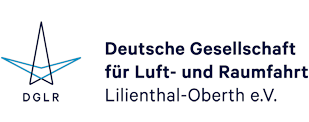DGLR-Publikationsdatenbank - Detailansicht
Autor(en):
P. Balack, T. Hecken, M. Petsch, G. Atanasov, D. Silberhorn
Zusammenfassung:
Hydrogen-powered aircraft can contribute to the effort of reducing aviation´s climate impact. A better under-standing of the liquid hydrogen storage with respect to airframe integration is required to improve the predictive qualities of overall aircraft design studies. This paper presents the synthesis of loads and mass estimation models in hydrogen aircraft design. A case study is performed on the assessment of non-integral liquid hydro-gen tanks and their impact on the fuselage structure. The introduction of loads analysis and analytical design of primary fuselage structures is able to capture more design sensitivities compared to a design process that fully relies on empirical methods. Technical challenges of the fuel tank integration in the rear of the fuselage are reviewed and critical design parameters discussed.
Veranstaltung:
Deutscher Luft- und Raumfahrtkongress 2022, Dresden
Verlag, Ort:
Deutsche Gesellschaft für Luft- und Raumfahrt - Lilienthal-Oberth e.V., Bonn, 2025
Medientyp:
Conference Paper
Sprache:
englisch
Format:
21,0 x 29,7 cm, 6 Seiten
URN:
urn:nbn:de:101:1-2503141222494.303159528508
DOI:
10.25967/570315
Stichworte zum Inhalt:
Hydrogen Aircraft, Conceptual Aircraft Design, Fuselage Mass Estimation, Hydrogen Fuel Tank Integration
Verfügbarkeit:
Kommentar:
Zitierform:
Balack, P.; Hecken, T.; et al. (2025): Semi-Physical Method for the Mass Estimation of Fuselages carrying Liquid Hydrogen Fuel Tanks in Conceptual Aircraft Design. Deutsche Gesellschaft für Luft- und Raumfahrt - Lilienthal-Oberth e.V.. (Text). https://doi.org/10.25967/570315. urn:nbn:de:101:1-2503141222494.303159528508.
Veröffentlicht am:
14.03.2025
